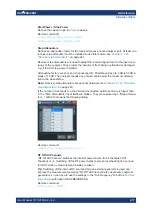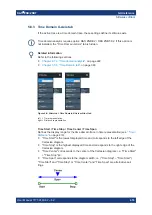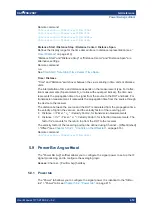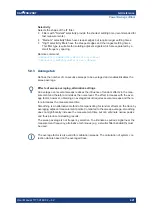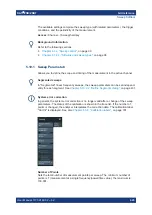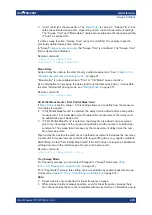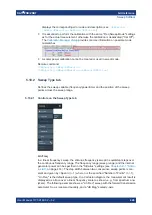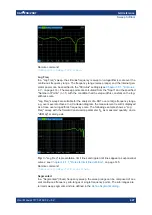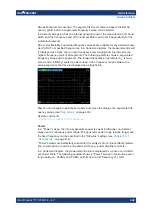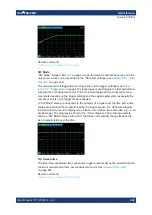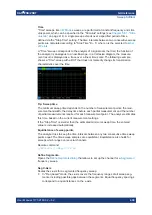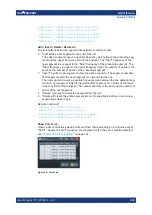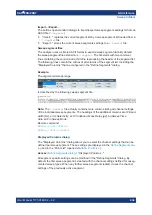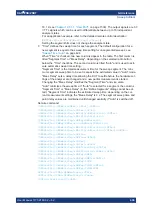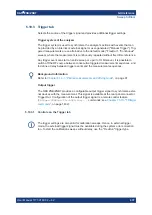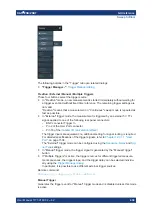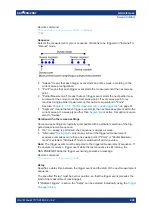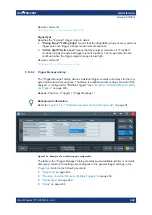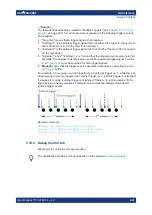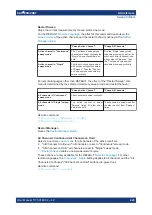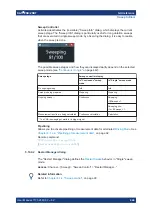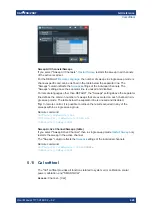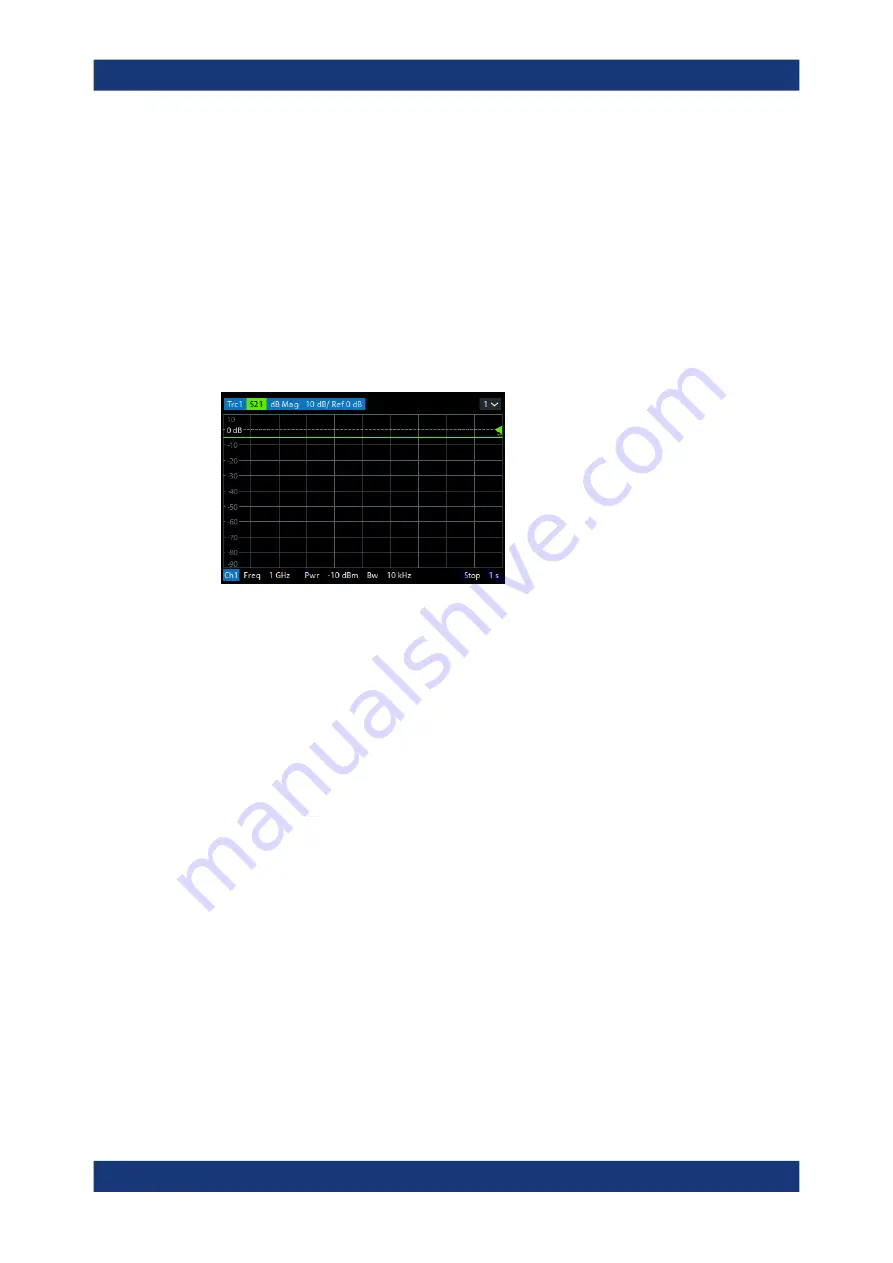
GUI reference
R&S
®
ZNB/ZNBT
430
User Manual 1173.9163.02 ─ 62
Time
"Time" sweeps, like
sweeps, are performed at constant frequency and stim-
ulus power, which can be specified in the "Stimulus" settings (see
on page 414). A single sweep extends over a specified period of time,
defined via the "Stop Time" setting. The time intervals between two consecutive sweep
points are calculated according to "Stop Time"/(n - 1) where n is the selected
.
A "Time" sweep corresponds to the analysis of a signal over the time; the function of
the analyzer is analogous to an oscilloscope. In a Cartesian diagram, the measure-
ment result is displayed as a trace over a linear time scale. The following example
shows a "Time" sweep with a DUT that does not markedly change its transmission
characteristics over the time.
Tip: Sweep time
The minimum sweep time depends on the number of measurement points, the mea-
surement bandwidth, the delay time before each partial measurement and the number
of partial measurements required for each measurement point. The analyzer estimates
this time, based on the current measurement settings.
If the "Stop Time" is smaller than the estimated minimum sweep time, the entered
value is increased automatically.
Equidistance of sweep points
The analyzer tries to keep the time intervals between any two consecutive time sweep
points equal: The time sweep samples are equidistant. Equidistance also holds for
sweeps which range over several channels.
Remote command:
Define Segments...
that allows to set up the channel for a
frequency sweep.
Seg X-Axis
Scales the x-axis for a segmented frequency sweep:
●
In "Freq based" mode, the x-axis covers the frequency ranges of all sweep seg-
ments, including possible gaps between the segments. Equal frequency spacings
correspond to equal distances on the x-axis.
Sweep Softtool


